Remove apps that open pages offering fake Adobe Flash Player updates
Phishing/ScamAlso Known As: Fake Flash Player update pop-up
Get free scan and check if your device is infected.
Remove it nowTo use full-featured product, you have to purchase a license for Combo Cleaner. Seven days free trial available. Combo Cleaner is owned and operated by RCS LT, the parent company of PCRisk.com.
What is "Fake flash player update"?
There are many websites that are designed to deceive visitors into using a fake Adobe Flash Player installer, which supposedly updates the currently installed version. These fake installers are designed to install browser hijackers, adware and other potentially unwanted applications (PUAs).
In some cases, they infect operating systems with ransomware, Trojans, or other high-risk malware. Typically, these fake Adobe Flash Player installers are promoted on untrustworthy web pages that have nothing to do with the official Adobe Flash Player version or its download page. Criminals who promote such scams also target Mac users.
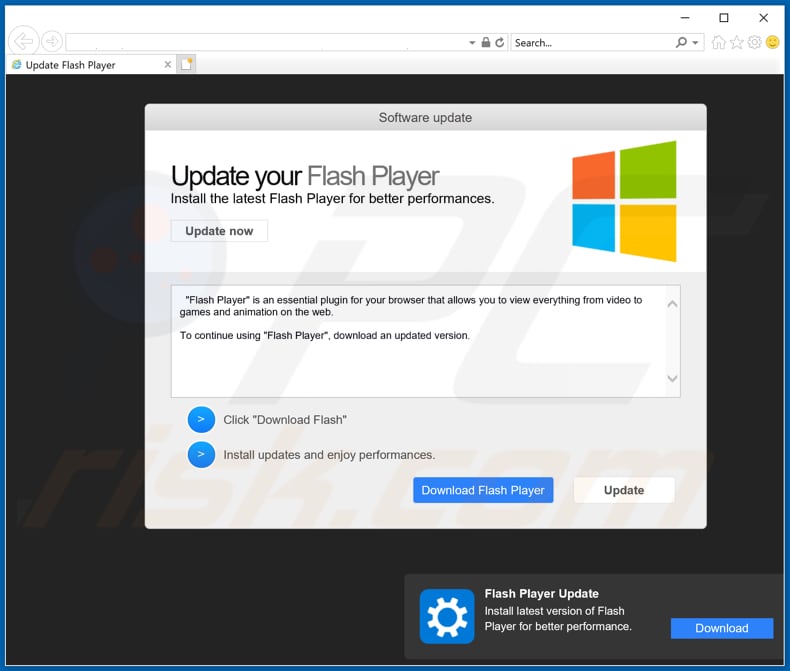
At the time of research, a deceptive page promoting a fake Adobe Flash Player installer suggested that the installed version of Adobe Flash Player might be out of date and recommended an update. These sites often claim that the installed version is out of date and will not work unless it is updated.
In any case, fake Adobe Flash Player installers do not update the Adobe Flash Player - they install PUAs such as a browser hijackers or adware-type apps. Typically, browser hijackers promote fake search engines (by changing certain browser settings) and gather information.
In most cases, they collect browsing-related data, however, they might also record personal information. Developers misuse the data to generate revenue by selling it to third parties (potentially, cyber criminals), who then misuse it in other ways. Adware is software that serves various intrusive advertisements.
For example, coupons, banners, surveys, and pop-ups. These open untrusted pages or download/install unwanted apps by executing certain scripts. Note that adware-type apps can also track information. As mentioned, fake Adobe Flash Player installers can be designed to install ransomware, Trojans or other malicious software.
Ransomware is malware that encrypts files so that they cannot be recovered without tools held only by the cyber criminals who designed the program.
This software can cause data and financial loss. Trojans are malicious programs that often proliferate and install other software of this kind, including ransomware. Therefore, unofficial, deceptive pages that offer to update Adobe Flash Player can never be trusted.
| Name | Fake Flash Player update pop-up |
| Threat Type | Phishing, Scam, Social Engineering, Fraud. |
| Fake Claim | This deceptive page suggests that Adobe Flash Player may be out of date. |
| Detection Names (adobe_flash_player_1840612795.exe) | Avast (FileRepMalware [PUP]), AVG (FileRepMalware [PUP]), ESET-NOD32 (Win32/InstallCore.AYH Potentially Unwanted), Microsoft (Trojan:Win32/Wacatac.B!ml), Full List Of Detections (VirusTotal) |
| Symptoms | Fake error messages, fake system warnings, pop-up errors, hoax computer scan. |
| Distribution methods | Compromised websites, rogue online pop-up ads, potentially unwanted applications. |
| Damage | Loss of sensitive private information, monetary loss, identity theft, possible malware infections. |
| Malware Removal (Windows) |
To eliminate possible malware infections, scan your computer with legitimate antivirus software. Our security researchers recommend using Combo Cleaner. Download Combo CleanerTo use full-featured product, you have to purchase a license for Combo Cleaner. 7 days free trial available. Combo Cleaner is owned and operated by RCS LT, the parent company of PCRisk.com. |
Generally, people do not intentionally visit deceptive web pages suggesting that Adobe Flash Player is out of date - these pages are opened through clicked deceptive advertisements, other untrusted sites or by installed PUAs. If a browser opens dubious pages automatically, a PUA is likely to already be installed.
How did potentially unwanted applications install on my computer?
PUAs are often downloaded and installed through the set-ups of other software. I.e., when they are included into download and installation set-ups as "additional offers".
These can usually be found in "Custom", "Advanced", or "Manual" settings. When people download and install programs without checking and changing these settings, they allow PUAs to be downloaded and installed by default. This PUA distribution method is known as "bundling".
Unwanted downloads and installations can also be caused by clicking deceptive advertisements that run certain scripts.
How to avoid installation of potentially unwanted applications
Third party downloaders, installers, Peer-to-Peer networks (e.g, torrent clients, eMule), unofficial pages, and other similar download, installation tools, channels are often used to distribute PUAs. Therefore, software and files should be downloaded only from official websites and through direct links.
Downloads and installations should not be performed without first checking "Advanced", "Custom" and other settings. These commonly mention offers to download and install additional, unwanted software. Do not click advertisements that are displayed on dubious websites.
When clicked, these ads can open untrusted websites or cause unwanted downloads/installations. Remove any unwanted, suspicious extensions, add-ons, plug-ins installed on the browser immediately. Also remove software of this kind that is installed on the operating system.
If your computer is already infected with PUAs, we recommend running a scan with Combo Cleaner Antivirus for Windows to automatically eliminate them.
The appearance of a deceptive web page offering to update Adobe Flash Player with a fake installer: (GIF):
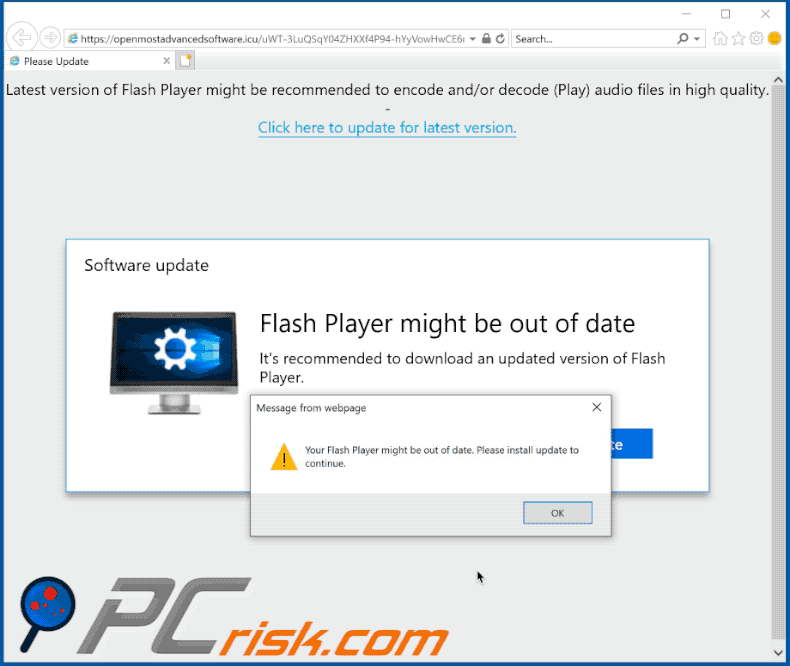
Screenshots of a fake Adobe Flash Player installer:
Another example of a fake Flash Player update website:
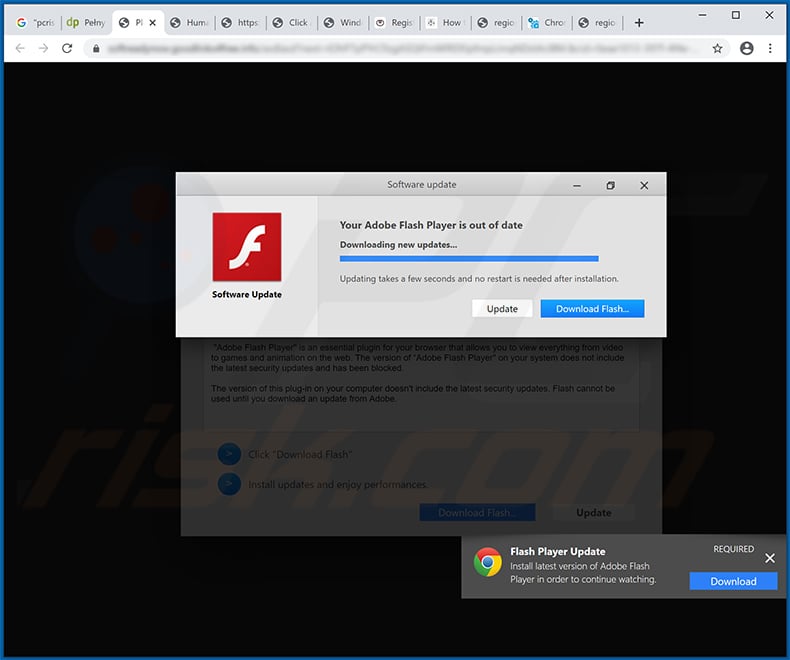
Appearance of this site (GIF):
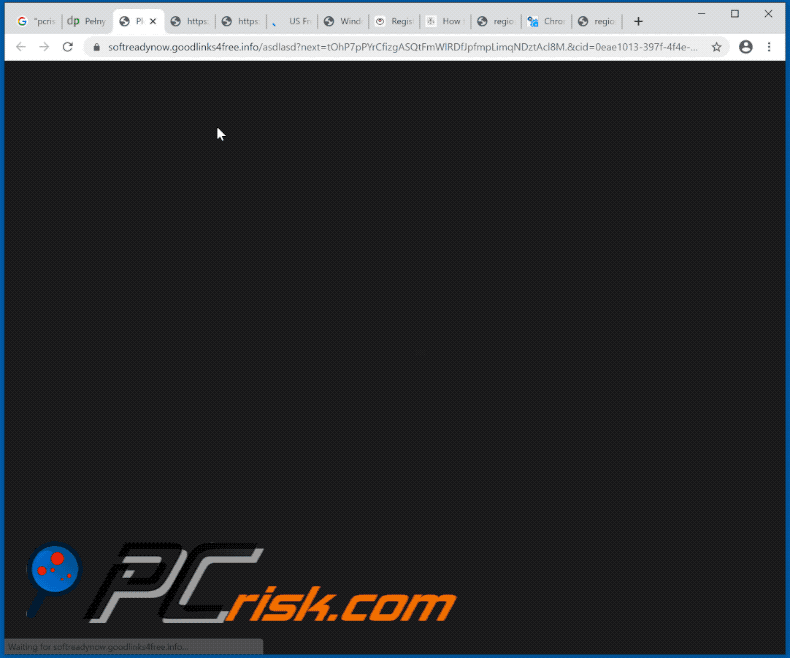
Yet another example of fake flash player update pop-up:
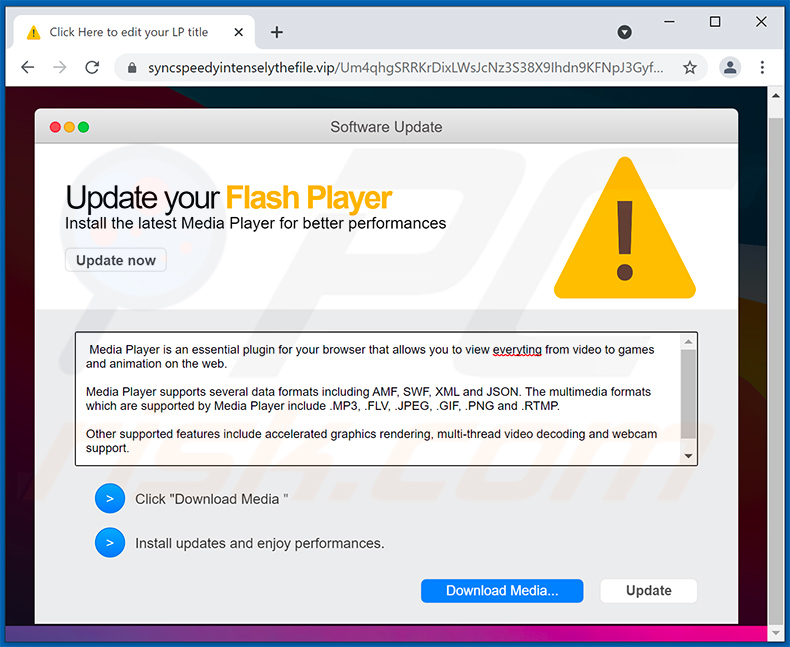
Text presented within:
Update your Flash Player
Install the latest Media Player for better performancesUpdate now
Media Player is an essential plugin for your browser that allows you to view everyting from video to games and animation on the web.
Media Player supports several data formats including AMF, SWF, XML and JSON. The multimedia formats which are supported by Media Player include .MP3, .FLV, .JPEG, .GIF, .PNG and .RTMP.
Other supported features include accelerated graphics rendering, multi-thread video decoding and webcam support.
>Click "Download Media ">Install updates and enjoy performances.
[Download Media] [Update]
Instant automatic malware removal:
Manual threat removal might be a lengthy and complicated process that requires advanced IT skills. Combo Cleaner is a professional automatic malware removal tool that is recommended to get rid of malware. Download it by clicking the button below:
DOWNLOAD Combo CleanerBy downloading any software listed on this website you agree to our Privacy Policy and Terms of Use. To use full-featured product, you have to purchase a license for Combo Cleaner. 7 days free trial available. Combo Cleaner is owned and operated by RCS LT, the parent company of PCRisk.com.
Quick menu:
- What is "Fake flash player update"?
- STEP 1. Uninstall deceptive applications using Control Panel.
- STEP 2. Remove adware from Internet Explorer.
- STEP 3. Remove rogue extensions from Google Chrome.
- STEP 4. Remove potentially unwanted plug-ins from Mozilla Firefox.
- STEP 5. Remove rogue extensions from Safari.
- STEP 6. Remove rogue plug-ins from Microsoft Edge.
Removal of potentially unwanted applications:
Windows 11 users:

Right-click on the Start icon, select Apps and Features. In the opened window search for the application you want to uninstall, after locating it, click on the three vertical dots and select Uninstall.
Windows 10 users:

Right-click in the lower left corner of the screen, in the Quick Access Menu select Control Panel. In the opened window choose Programs and Features.
Windows 7 users:

Click Start (Windows Logo at the bottom left corner of your desktop), choose Control Panel. Locate Programs and click Uninstall a program.
macOS (OSX) users:

Click Finder, in the opened screen select Applications. Drag the app from the Applications folder to the Trash (located in your Dock), then right click the Trash icon and select Empty Trash.
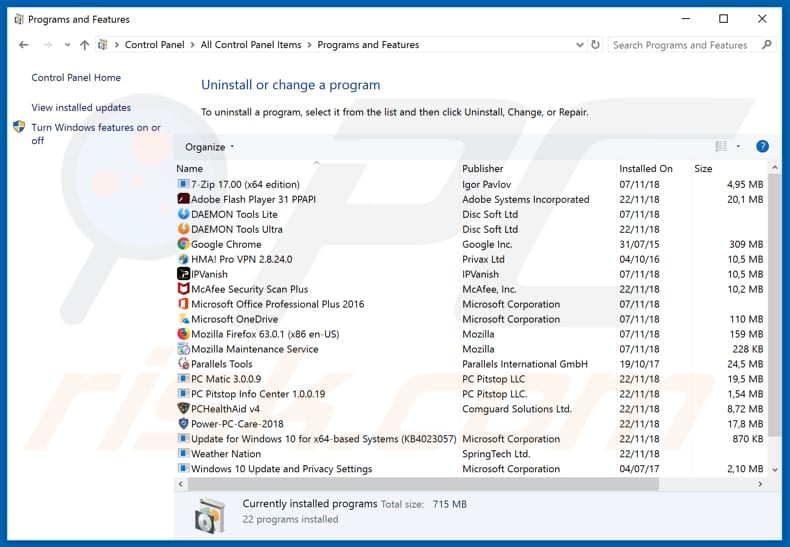
In the uninstall programs window, look for any suspicious/recently-installed applications, select these entries and click "Uninstall" or "Remove".
After uninstalling the potentially unwanted application, scan your computer for any remaining unwanted components or possible malware infections. To scan your computer, use recommended malware removal software.
DOWNLOAD remover for malware infections
Combo Cleaner checks if your computer is infected with malware. To use full-featured product, you have to purchase a license for Combo Cleaner. 7 days free trial available. Combo Cleaner is owned and operated by RCS LT, the parent company of PCRisk.com.
Remove rogue extensions from Internet browsers:
Video showing how to remove potentially unwanted browser add-ons:
 Remove malicious add-ons from Internet Explorer:
Remove malicious add-ons from Internet Explorer:
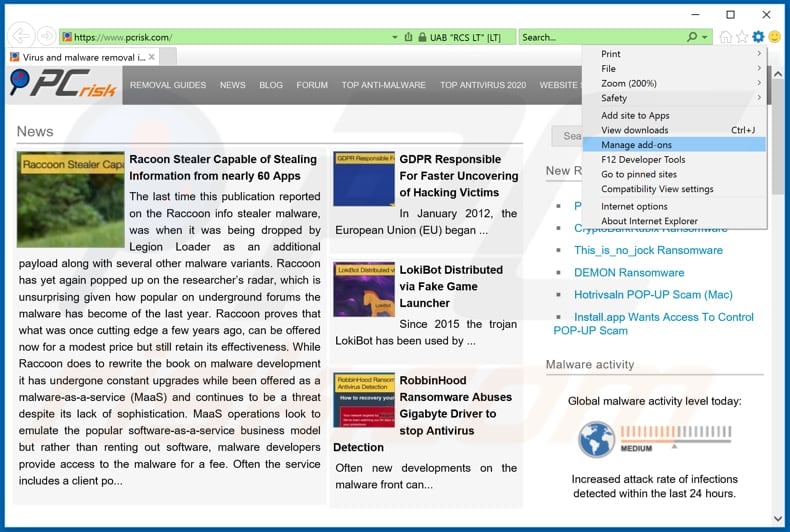
Click the "gear" icon ![]() (at the top right corner of Internet Explorer), select "Manage Add-ons". Look for any recently-installed suspicious browser extensions, select these entries and click "Remove".
(at the top right corner of Internet Explorer), select "Manage Add-ons". Look for any recently-installed suspicious browser extensions, select these entries and click "Remove".
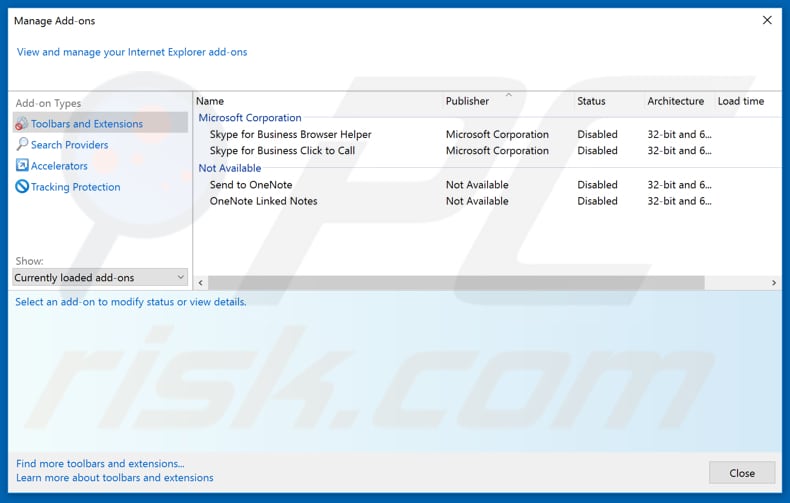
Optional method:
If you continue to have problems with removal of the fake flash player update pop-up, reset your Internet Explorer settings to default.
Windows XP users: Click Start, click Run, in the opened window type inetcpl.cpl In the opened window click the Advanced tab, then click Reset.

Windows Vista and Windows 7 users: Click the Windows logo, in the start search box type inetcpl.cpl and click enter. In the opened window click the Advanced tab, then click Reset.

Windows 8 users: Open Internet Explorer and click the gear icon. Select Internet Options.

In the opened window, select the Advanced tab.

Click the Reset button.

Confirm that you wish to reset Internet Explorer settings to default by clicking the Reset button.

 Remove malicious extensions from Google Chrome:
Remove malicious extensions from Google Chrome:
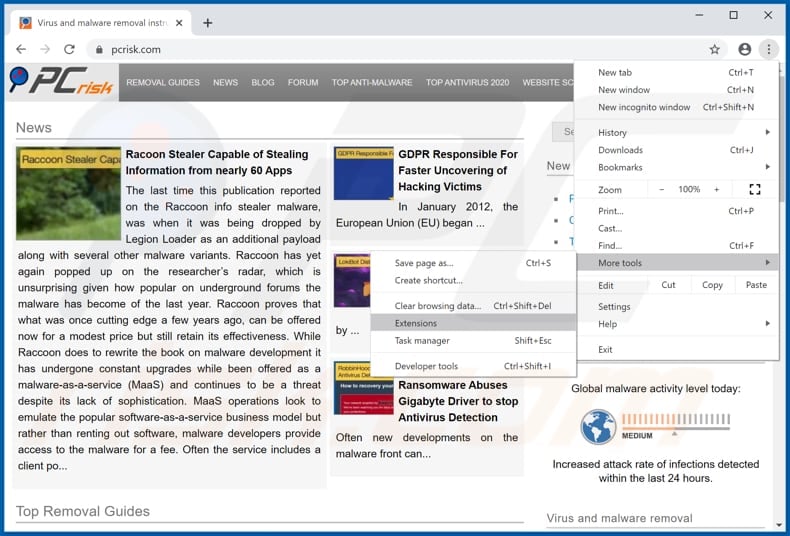
Click the Chrome menu icon ![]() (at the top right corner of Google Chrome), select "More tools" and click "Extensions". Locate all recently-installed suspicious browser add-ons and remove them.
(at the top right corner of Google Chrome), select "More tools" and click "Extensions". Locate all recently-installed suspicious browser add-ons and remove them.
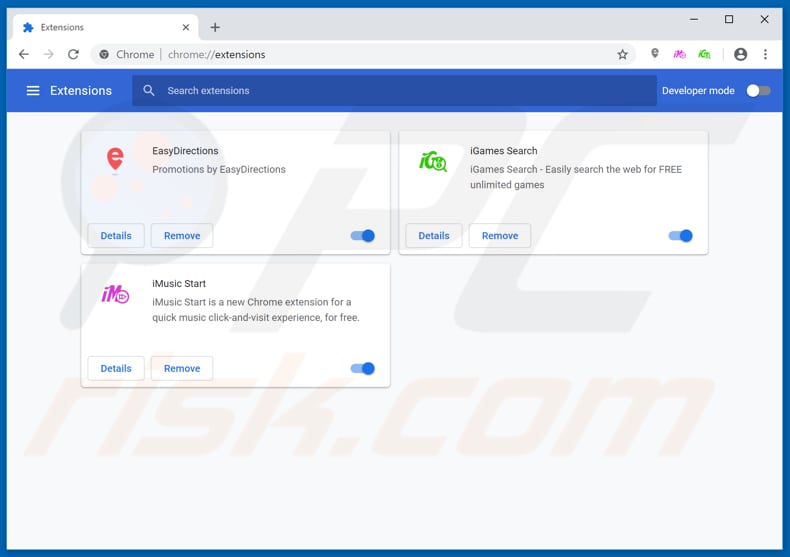
Optional method:
If you continue to have problems with removal of the fake flash player update pop-up, reset your Google Chrome browser settings. Click the Chrome menu icon ![]() (at the top right corner of Google Chrome) and select Settings. Scroll down to the bottom of the screen. Click the Advanced… link.
(at the top right corner of Google Chrome) and select Settings. Scroll down to the bottom of the screen. Click the Advanced… link.

After scrolling to the bottom of the screen, click the Reset (Restore settings to their original defaults) button.

In the opened window, confirm that you wish to reset Google Chrome settings to default by clicking the Reset button.

 Remove malicious plug-ins from Mozilla Firefox:
Remove malicious plug-ins from Mozilla Firefox:
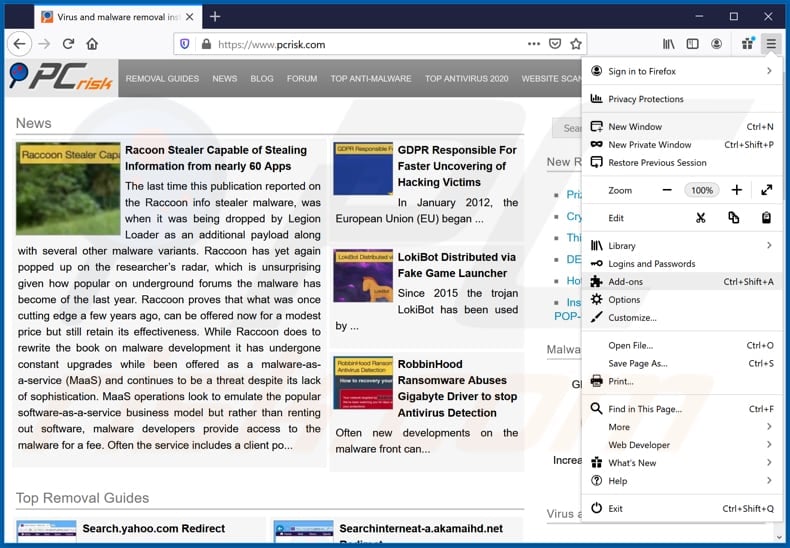
Click the Firefox menu ![]() (at the top right corner of the main window), select "Add-ons". Click on "Extensions", in the opened window remove all recently-installed suspicious browser plug-ins.
(at the top right corner of the main window), select "Add-ons". Click on "Extensions", in the opened window remove all recently-installed suspicious browser plug-ins.
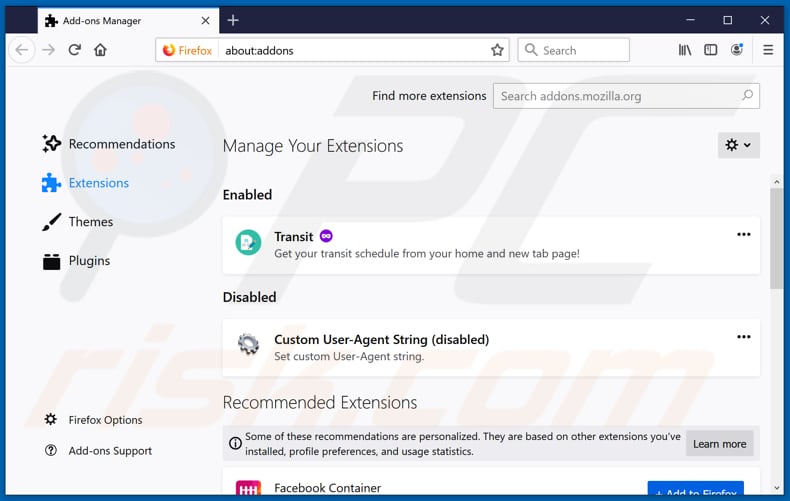
Optional method:
Computer users who have problems with fake flash player update pop-up removal can reset their Mozilla Firefox settings.
Open Mozilla Firefox, at the top right corner of the main window, click the Firefox menu, ![]() in the opened menu, click Help.
in the opened menu, click Help.

Select Troubleshooting Information.

In the opened window, click the Refresh Firefox button.

In the opened window, confirm that you wish to reset Mozilla Firefox settings to default by clicking the Refresh Firefox button.

 Remove malicious extensions from Safari:
Remove malicious extensions from Safari:

Make sure your Safari browser is active, click Safari menu, and select Preferences....

In the opened window click Extensions, locate any recently installed suspicious extension, select it and click Uninstall.
Optional method:
Make sure your Safari browser is active and click on Safari menu. From the drop down menu select Clear History and Website Data...

In the opened window select all history and click the Clear History button.

 Remove malicious extensions from Microsoft Edge:
Remove malicious extensions from Microsoft Edge:

Click the Edge menu icon ![]() (at the upper-right corner of Microsoft Edge), select "Extensions". Locate all recently-installed suspicious browser add-ons and click "Remove" below their names.
(at the upper-right corner of Microsoft Edge), select "Extensions". Locate all recently-installed suspicious browser add-ons and click "Remove" below their names.

Optional method:
If you continue to have problems with removal of the fake flash player update pop-up, reset your Microsoft Edge browser settings. Click the Edge menu icon ![]() (at the top right corner of Microsoft Edge) and select Settings.
(at the top right corner of Microsoft Edge) and select Settings.

In the opened settings menu select Reset settings.

Select Restore settings to their default values. In the opened window, confirm that you wish to reset Microsoft Edge settings to default by clicking the Reset button.

- If this did not help, follow these alternative instructions explaining how to reset the Microsoft Edge browser.
Summary:
 Commonly, adware or potentially unwanted applications infiltrate Internet browsers through free software downloads. Note that the safest source for downloading free software is via developers' websites only. To avoid installation of adware, be very attentive when downloading and installing free software. When installing previously-downloaded free programs, choose the custom or advanced installation options – this step will reveal any potentially unwanted applications listed for installation together with your chosen free program.
Commonly, adware or potentially unwanted applications infiltrate Internet browsers through free software downloads. Note that the safest source for downloading free software is via developers' websites only. To avoid installation of adware, be very attentive when downloading and installing free software. When installing previously-downloaded free programs, choose the custom or advanced installation options – this step will reveal any potentially unwanted applications listed for installation together with your chosen free program.
Post a comment:
If you have additional information on fake flash player update pop-up or it's removal please share your knowledge in the comments section below.
Share:

Tomas Meskauskas
Expert security researcher, professional malware analyst
I am passionate about computer security and technology. I have an experience of over 10 years working in various companies related to computer technical issue solving and Internet security. I have been working as an author and editor for pcrisk.com since 2010. Follow me on Twitter and LinkedIn to stay informed about the latest online security threats.
PCrisk security portal is brought by a company RCS LT.
Joined forces of security researchers help educate computer users about the latest online security threats. More information about the company RCS LT.
Our malware removal guides are free. However, if you want to support us you can send us a donation.
DonatePCrisk security portal is brought by a company RCS LT.
Joined forces of security researchers help educate computer users about the latest online security threats. More information about the company RCS LT.
Our malware removal guides are free. However, if you want to support us you can send us a donation.
Donate
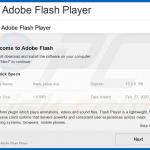


▼ Show Discussion